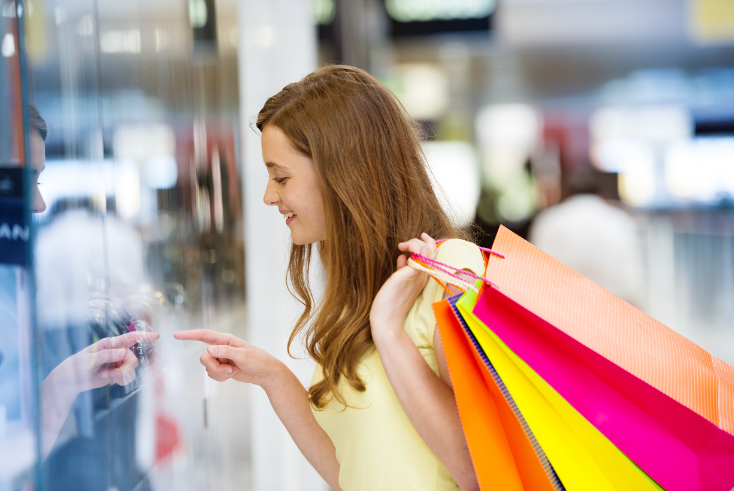Ready, set, spend: Tapping into the billions of British lockdown savings

Brits have been saving over the past year and we’re ready to shell-out. Zack Sullivan, CRO UK at Future, reveals insights into our spending plans and the potential for brands
Brits have saved a staggering £245 billion in lockdown and, according to the latest research, they’re now ready to start spending. However, while many are eager for ‘normality’, not everyone is rushing to leave the comfort of home.
To understand which of 2020’s lifestyle changes are here to stay and how advertisers need to adapt, we surveyed 2,000 nationally representative UK consumers, recruited independently through our research platform, The Lens.
The resulting insights into consumer spending plans, buying motivations and financial circumstances offer advertisers a detailed and interesting picture as restrictions lift.
Brits are ready to spend
As a result of lockdowns over the past year, more than three-quarters (77%) of UK consumers have been able to make substantial savings.
The average household now has over £4,800 in savings, amounting to a collective total of £245 billion nationwide, and a quarter (25%) of this figure will be spent as soon as lockdown ends, or not long after.
There is phenomenal purchase potential as the country continues to open up: so how can brands make the most of it?
Almost half (45%) of consumers have started researching their intended purchases, with peak spending time due to occur between April and June.
Advertisers must react swiftly to tap into this valuable opportunity, but it won’t necessarily require an overhaul of existing strategies.
Digital will retain its position as the most important shopping channel, as more than four-fifths (86%) of consumers plan to shop online post-pandemic.
In fact, only around one in ten (11%) claim they don’t enjoy using digital channels at all, indicating that brands’ efforts to craft engaging online journeys will continue to drive revenue.
A focus on what matters most
Whether it’s returning to football stadiums or splashing out on a cycling holiday, consumers will prioritise their favourite pastimes to combat ‘lockdown blues’; over three-quarters (76%) of purchases will be related to consumers’ passions and hobbies.
A quarter (25%) of survey respondents claim they will treat themselves after a hard year, while almost three in ten (29%) will celebrate the return to normality.
With purchase intent at a high, and passions fuelling many spending decisions, understanding audience interests will be critical for advertisers as they seek to capitalise on the spending boom.
It’s intuitive to believe socialising is a top priority for consumers and the research confirms this – over half (53%) plan to spend on travelling and more than two-fifths (42%) will be visiting pubs and restaurants in the near future.
Brands should also pay attention, however, to what attracted shoppers throughout lockdowns.
[advert position=”left”]
Remote working is set to be a lasting trend, which is reflected in the ongoing popularity of personal and home technology; 10% and 9% of consumers respectively claim these products will remain on their shopping lists.
The additional time spent at home also continues to encourage purchases for home decoration (11%) and garden products (10%), as people take pride and comfort in their personal spaces.
This is further supported by a recent survey conducted by Future’s homes network, which revealed the average expected spend on home projects in the next 12 months is £11,137.
For advertisers, informed, tailored strategies will be crucial, because despite their willingness to spend, shoppers will be far more conscientious with their purchases and where they choose to spend their pennies.
Thoughtful spenders need thoughtful strategies
The survey shows a strong financial awareness among consumers moving forwards, with almost three-fifths (58%) saying they will carefully scrutinise their purchases before hitting the buy button.
Depending on the cost, the length of time consumers will take for consideration ranges between 8-25 days. For brands, this means that adapting touch-points to be informative and trustworthy will better support their advertising efforts.
Although over a third (34%) of shoppers trust recommendations from friends and family, even more (36%) will turn to professional reviews if they don’t have personal experience with a particular product.
Trusted website articles will own an integral role in purchasing decisions for over two-fifths (43%) of consumers.
Dynamic shifts in consumer behaviours will likely continue as we emerge from a year of exceptional change, but clear trends in purchasing habits are being revealed.
Lockdown savings are ready to be spent so if advertisers want to take a piece of the £245 billion pie, they must create strategies that focus on influencing buying decisions in trusted environments.
With specific passions and interests making up a considerable slice of spend in the next quarter, media partners with a detailed understanding of their loyal audiences will play a crucial role in meeting consumers’ individual needs, at scale.




